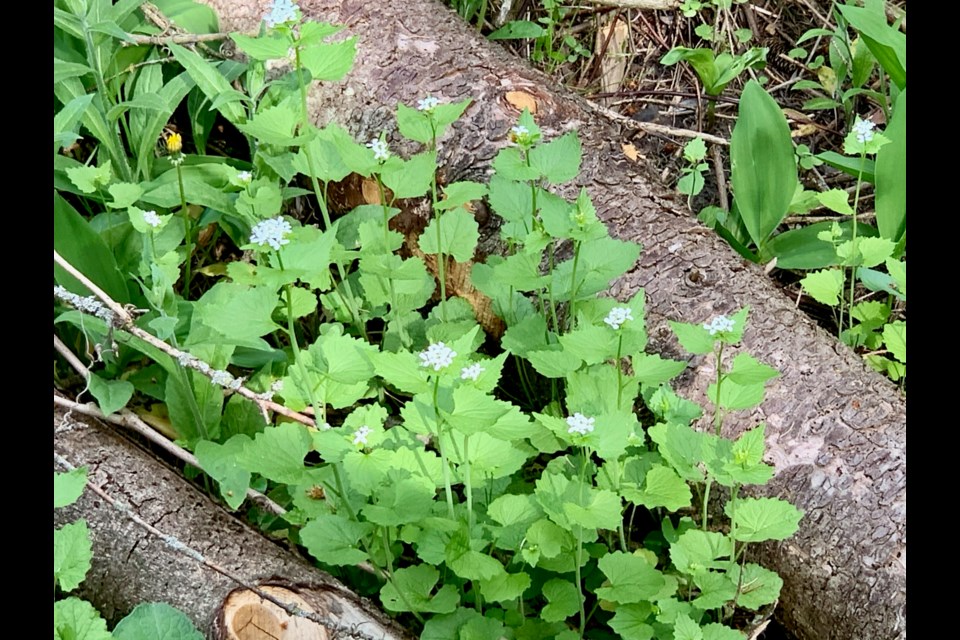A herb brought to North America in the early 1800s is now one of “Ontario’s most aggressive invaders.”
Garlic mustard spreads quickly in otherwise undisturbed areas, and has been known to displace native flowers like trilliums and trout lilies, according to the Ontario Ministry of Natural Resources and Forestry.
The Nottawasaga Valley Conservation Authority (NVCA) reports the green leafy weed “continues to invade” the local watershed, often spreading along trail systems and infesting parts of the Bruce Trail.
Clusters of garlic mustard have the ability to double in size every four years, according to the NVCA. The roots produce toxic chemicals interfering with the soil composition and wiping out native ground covers like trilliums
Garlic mustard is a single stem herb that grows between three and four feet tall. First year plants have kidney-shaped leaves with scalloped edges and second-year plants are taller and have triangular, toothed leaves.
In the spring, the plants produce white flower clusters, then seed pods starting in June with black seeds in late July.
Both the province and the conservation authority offer tips for removing the invasive species and ways to prevent accidental spread.
- You can remove the plant by pulling slowly from the bottom of the stem and putting pulled plants in black plastic bags in direct sunlight before disposing in the garbage. The plants should not be composted or burned as this will spread the seeds further. Ideally the plants should be pulled out of the ground in May and June before seeds develop.
- Report sightings of garlic mustard and submit a digital photo online at eddmaps.org.
- Clean your shoes after hiking, stick to the trails, and keep pets on a leash.
- Learn how to identify garlic mustard and other invasive plants and effectively manage them on your property with this guide from the province.
There’s another option to help slow down the garlic mustard invasion. Garlic mustard gets its name for the odour the leaves release when crushed. The species was first brought here from Europe as a food herb.
Garlic mustard is edible, and the York Region Environmental Alliance (YREA) has even published a recipe for pesto using the invasive plant.
The recipe calls for two packed cups of the weed’s leaves, mixed with three garlic cloves, two tablespoons of hemp seeds, walnuts or pine nuts, and one cup of grated Romano cheese. Once that’s all chopped up in a food processor, it’s drizzled with olive oil and ready to enjoy.
“It’s delicious. It’s very good,” said Gloria Marsh, executive director of YREA. “I mean, eat your weeds!”
The recipe recommends serving it with pasta, on raw tomatoes or putting it on pizza. Marsh even thinks local restaurants could go out and pick it to put the pesto on their menus.
Remember when you’re harvesting to pull the plants from the root and keep them in a black plastic bag so you’re not spreading the invasive weed when you collect it for the kitchen.
You can read more about garlic mustard from the Ministry of Natural Resources and Forestry here, or from the NVCA here.
- With files from Elizabeth Keith
